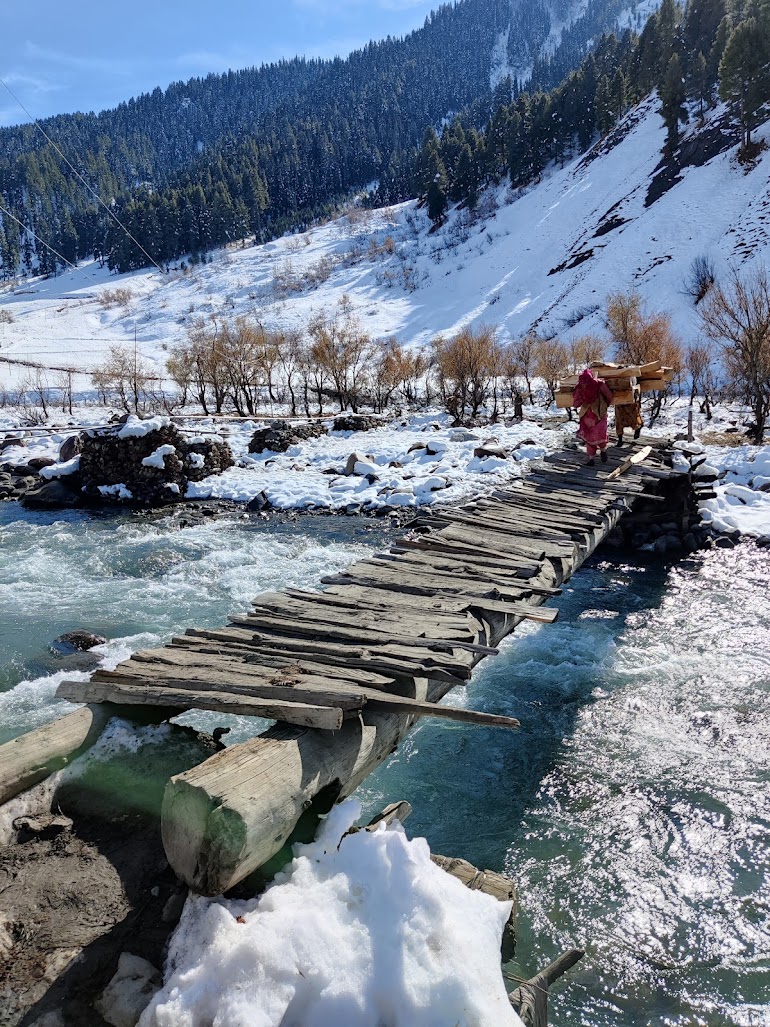For so many years
living in Delhi, handling the tough life, travel has been that soothing balm on
my sores of life. Travel to Kashmir has always been healing. But travel to #Gurez
has been a next level experience, enchanting……

First stop, Srinagar,
the largest city and the summer capital of the Indian territory of Jammu and
Kashmir, where I soon found a sumo -- a local taxi that can
fit up to seven people -- that took me to Bandipora in northern Kashmir. After
an hour at the Bandipora bus stand, my eyes peeled for the sumo to fill
so that the driver would take me onward, I heaved a huge sigh of relief when a sumo
rolled up that was headed for #Gurez. It is only 81 km away, so I expected to
be there in just a few hours. Little did I know the state of the roads that lay
ahead of me.

After cruising smoothly out of Bandipora, sumo soon moved
onto the curvy roads leading up high. As things below got smaller, the road
ahead got bumpier. So bumpy that I had to hold my head to stop it banging
against the roof. Razdan Pass, I lost myself in the clouds that, with the sun
shining down from above, looked as if they were dancing on the peaks of the
mountains. The journey into the Greater Himalayas speaks for itself —
enchanting and fulfilling. The preface has been gratifying —as you look down
from the roadside, and tilt the head upwards, the #HarMukh gleams back. It is
up till #Tragbal that a few dabhaas, offering snacks with nun chai. The
snow-capped Himalayan mountains make their appearance as we cut across the
Razdan Pass at 11,672 ft. For people fond of remote locales and who want to
enjoy a peaceful holiday without phones, crowds, and the hustle and bustle of
the big city, few places on Earth can match #Gurez. Cool breeze flutter rows of green flags at the
shrine of Peer Baba, which is under Army’s patronage.

Passing by a dozen iron gates and army
bunkers, where at one point I was made to show my identity and register, after
seven hours I finally crossed the Kishan Ganga River and entered the town of
Dawar. The best thing was no network, no one to disturb that solitude. The Kishanganga power project here has changed
the landscape. Touching Dawar, the headquarters of #Gurez, is stepping into
another world: mountains rising high on all sides, water compellingly flowing,
creating its own melody, wooden log houses amid meadows.
And the sumo stopped and soon enough my eyes adjusted and I was
able to make out some known figure in the crowd. It gave me a tingle of
excitement. The freshness in air, the gushing water sound and Habba Khatoon
peak, pyramid-shaped peak named after Kashmiri poet #HabbaKhatoon right infront
of me. The Kishanganga power
project here has changed the landscape.
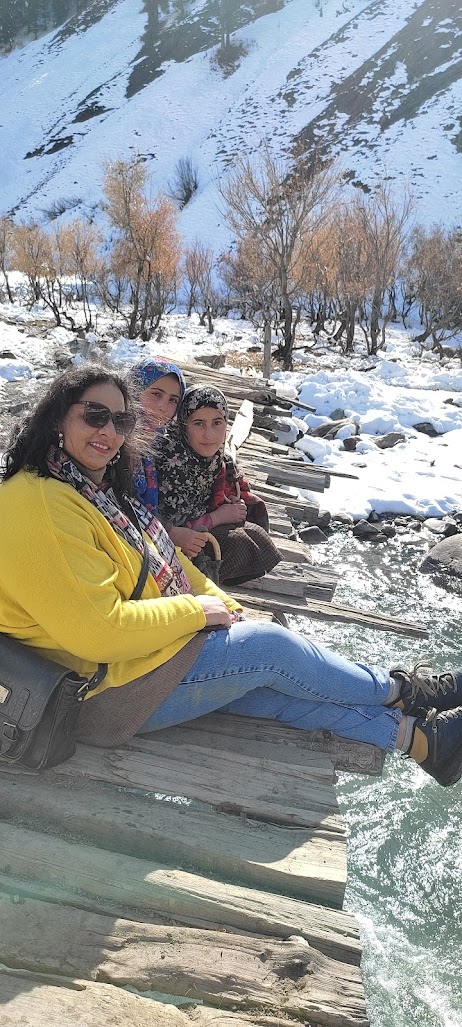
I was guided to
a hotel, a wooden structure with basic amenities. After settling down and
having a cup of noon chai, the dusk setting in. Soon we went for a walk, beside
the river, serene, calm and soothing, next to the waters of Kishanganga with
Habba Khatoon, a pyramid-shaped limestone rock, rising tall and magnificent,
overlooking Dawar, behind us. It is not just a colossal stone, but with it the
memory of Habba Khatoon, wife of last Kashmiri Muslim king Yusuf Shah Chak, is
permanently engraved in the minds of the people of #Gurez. A woman, poetess,
queen and a beloved, who is believed to have been wandering in the valley, in
search of her lover, Habba Khatoon is the essence of Kashmiri thought process.

Next day we set out in
the morning for #Tulail and #Badoaab, the beautiful villages that mark the last
check before #Chakwali, the line that divides India and Pakistan. Stopped few
times for registration and identification checks, I felt lucky to have my #Dardi
companion, who knew the routes, language, and shortcuts so well. And he knew
how to handle all the men in uniform, so many children playing cricket in the
streets. Another sign of how this remains a place without many of life's modern
conveniences. There is no internet connection of any kind and only a few hours
of electricity a day, which is supplied by generators belonging to the Border
Security Force. Jio and BSNL are the
only network providers — that too, till Dawar

The #Gurez Valley is home to the Dard
tribe, the aboriginals of this land. The Dard people are an ethnic group found
predominantly in Gurez and the adjoining regions, and also in northern
Pakistan, North West India and eastern Afghanistan.
Though a part of Kashmir yet so
different from Kashmir and #Kashmiriyat!!!
Kashmir's Gurez Valley remains a slice
of the old world even in our dark times. Its physical isolation has preserved
its environmental and cultural treasures. While its modern history has been
plagued by war tensions, it may come as a surprise to many that this
picturesque valley was once the gateway to the famous silk route across Asia.
Gurez Valley is today one of the far-flung regions of Jammu and Kashmir, cut
off for nearly seven months every year. It has also kept it largely unchanged.

The language of the Dard tribe is Shin,
also known by the names Sheena, Sina. The region where the Dardic language Shin
was spoken extended from Gilgit, Yasin, Satpara, Baltistan and other areas in
this Himalayan belt. This wide belt spread over thousands of kilometers. With
such a glorious history, it was not surprising that this region should be home
to wondrous archaeological treasures.

Even today, Gurez does not have regular
supply of electricity. Generator power is available only for a few hours every
day. Wi-Fi and internet are alien words for most people of the Dardic tribe who
have never been out of the valley.
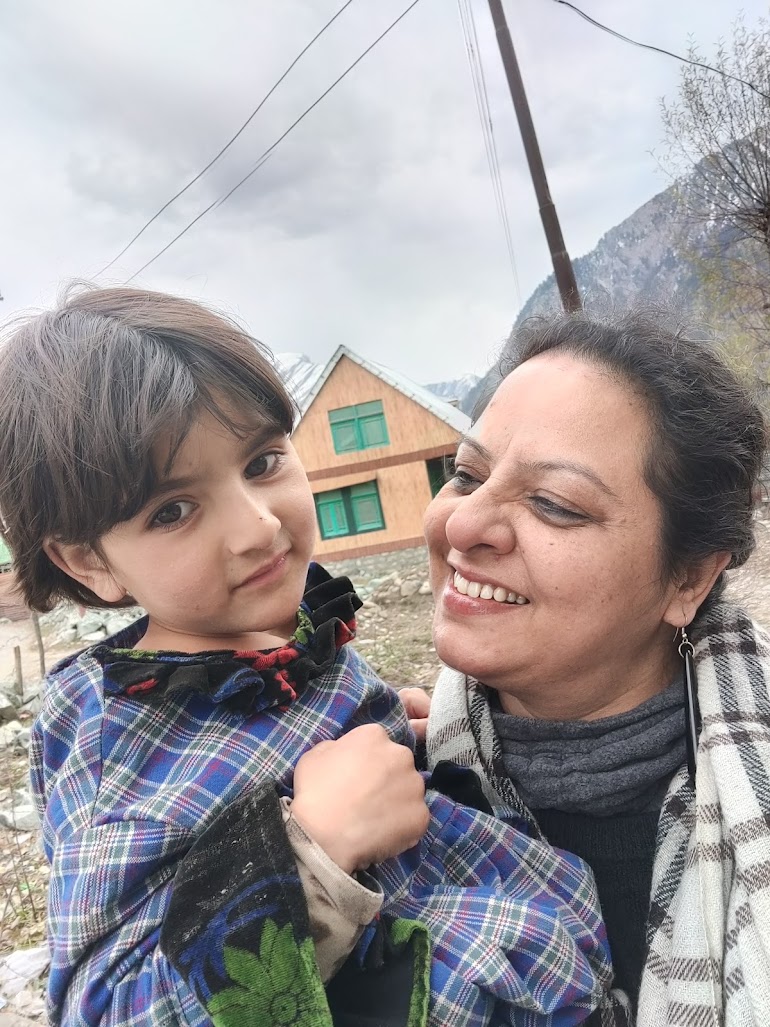
Today, rolls of concertina wires –
barbed, razor wires – cut across the undulating slopes of Gurez, hurting cattle
and smaller animals. The barbed wires confuse the gentle villagers of Gurez.
They cannot figure out why their valley, where crime is rare, should be slashed
haphazardly by these menacing wires.

Gurez has a unique richness in terms of fauna
and flora. The valley is home to beautiful, exotic flowers and plants. Gurez
has now become an area of international interest. In these hectic, modern
times, the quiet and slow life of Gurez seems like a slice of history from an
ancient time. As Gurez comes more prominently on the world map, it will change.
Perhaps in a few decades from now, it will be different. Insha Allah!
The
main attractions of Gurez are its historical status, archaeological sites, and
the local population that still live by their ancient traditions and culture. Gurez is blessed with lush green alpine forests, gushing
fresh water of the Kishanganga, lush meadows and snow-capped beautiful
mountains. A tourist wishes to see true natural beauty, not artificial parks
and gardens, and this is what Gurez is bestowed with.
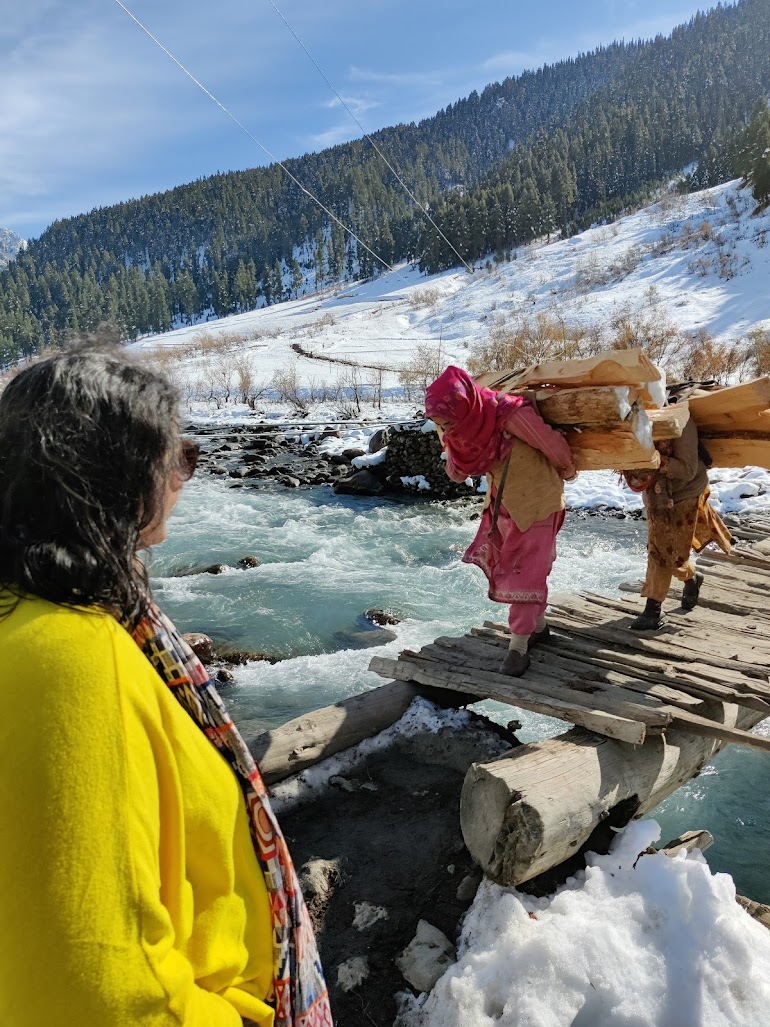
Life is difficult in
this beautiful but harsh region, where temperatures plummet to minus 10 degrees
in the winter. Here farming remains an activity for the entire family and is
still virtually the only source of income. People grow potatoes, kidney beans,
apples and corn. Everything is organic. For six months, from November to May,
Gurez is completely cut off from the world, buried under 6 meters of snow. This
is what makes the valley such a tranquil and striking place to visit, but a
perilous place to live. I spent my days soaking up the high mountain air, the
valley's snow filled, its gushing river and numerous streams.

Many from Gurez, particularly the ones
who could afford to, have moved here in Bandipore due to extremely harsh life
conditions there, but they remain distinct. The Partition divided this ancient
Dard-Shina civilization geographically, and even their hearts with families and
kin pushed to either side of the LoC.
Water sports, trekking and cycling can
become main attraction of the place. Gurez is still in the infant stage of
development. Gurez is a virgin place and I invite people to explore it because
other places like Sonmarg, Gulmarg and many more are overrated now. If the
captivating beauty of Kashmir can refresh your tired mind then it would not be
a gaffe to say that the pastoral Gurez can gift you with some of the most
rejuvenating moments of your life.

Born and brought up in the lap of
nature, I connect very well to the sounds of nature and find music in every
sound from chirping of birds to sounds made by wind and the breeze and the
buzzing wild bees. The people of Gurez are hopeful the such events will also
happen in the future and connect them to the outer world. Quiet and peaceful
destinations are often linked to introverts, but I discovered another truth:
that there are actually people who truly understand the value of solitude as
well as how to properly savor it. That is what Gurez taught me -- and I am
definitely one of life's extroverts.
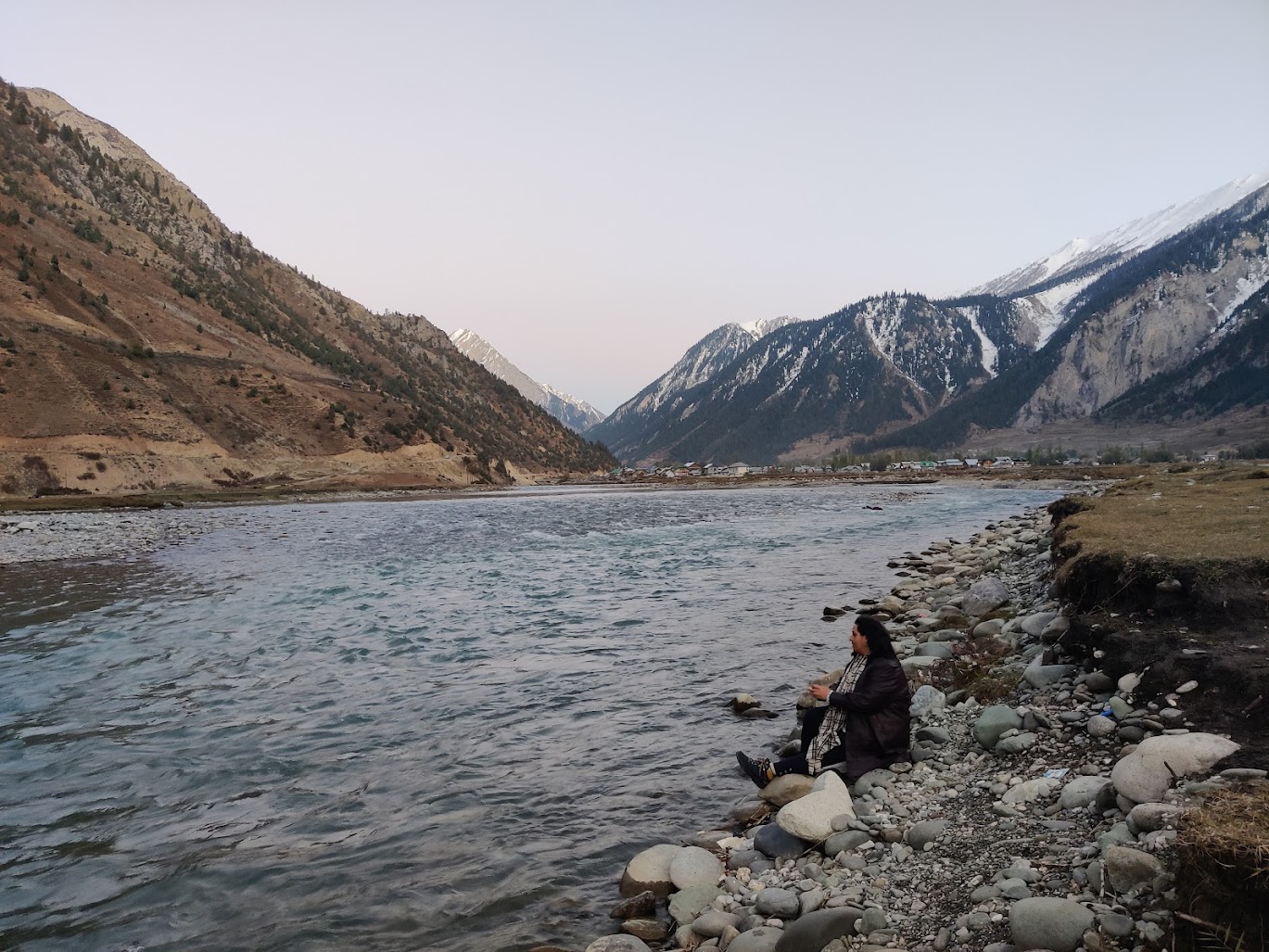
Leaving Gurez as the sun began to set, I
wondered what would change there over the next decade.
#HabbaKadal is in downtown,
Srinagar, where houses are like conjoined twins.































